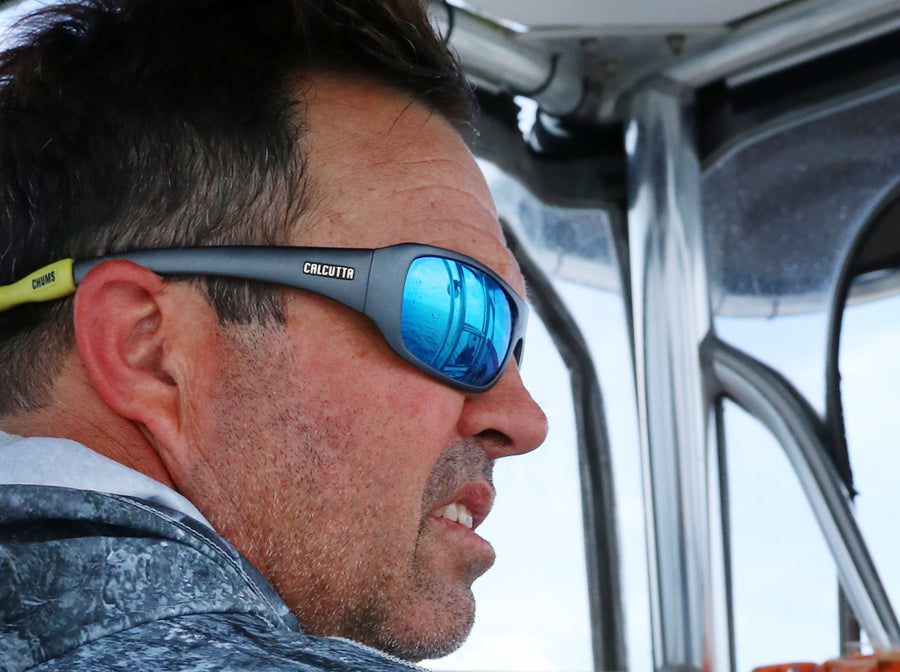Calcutta Outdoors Guide to Putting Line on a Fishing Reel -
Fishing is one of the most enjoyable ways to spend time outdoors with friends and family. While it may seem intimidating to beginners, fishing is actually a simple hobby to learn. For starters, fishermen and fisherwomen need to know how to put new line on a fishing reel. It’s helpful when you purchase a fishing reel that isn’t pre-spooled with line, or if you need to replace old fishing line. Fortunately, you don’t have to be an experienced angler to successfully add fishing line to your reel. It’s a task that you can easily do yourself in a matter of minutes. To help you, we’ve created this detailed guide that walks you through the best way to put new line on a fishing reel. Follow these steps and you’ll be ready to wet a hook in no time.
Line Strength
Choosing the best line for a spincast reel or picking the best line for a spinning reel starts with determining the line strength. Check the line’s strength to ensure it matches the reel. Line strength, called “test,” is measured in pounds. Whether it’s a spinning, spincasting or baitcasting model, every fishing reel is manufactured to work with a specific range of line strength. Generally, heavier test lines have thicker diameters. Line that isn’t properly sized will cause a reel to jam. Make sure the fishing line you plan to use is the correct weight for the reel.
Monofilament, Fluorocarbon or Braid?
The most common, and popular, type of fishing line is monofilament. “Mono,” as it’s called by fishermen, is easy to find at tackle shops and online. It’s economical and works well on various types of fishing reels. Fluorocarbon line is another option that’s popular with experienced anglers. Fluorocarbon lasts longer, stretches less than monofilament and is nearly invisible in the water. Some fishermen prefer braided line due to its incredible strength and long life. Since braided line is more visible to fish, anglers will often pair it with a monofilament or fluorocarbon leader.
Pro Tip: Always wet fishing knots with saliva before pulling the line tight. The saliva prevents abrasion and helps tighten the knot.
How to Put Line on a Spinning Reel
The best way to put fishing line on a spinning reel involves a few simple steps. If the reel is attached to a fishing rod, thread the tag end of the fishing line through the rod guides. Wrap the end of the line around the reel’s spool twice before tying the line onto the spool. Use an arbor knot (two simple overhand knots) to tie the tag end around the mainline. Pull the line to tighten the knot, then clip the exposed tag end, leaving at least 1/8" to prevent the knot coming untied.
Next, close the reel’s bail and begin slowly turning the reel handle to wind the fishing line onto the spool. The fishing line must have steady tension in order to properly spool the reel. It helps prevent tangles, loops and wind knots when casting. You can use your free, non-reeling hand or a second person to apply resistance. With tension on the line, continue winding the reel handle. The line should evenly fill the reel’s spool.
Not having enough line on a reel will diminish the reel’s performance and shorten casting distances. However, be careful to not overfill the reel. While you may be tempted to add as much line as the reel will possibly hold, an overfull spool is a recipe for annoying backlashes, line twist and tangles. Stop filling the spool before the line reaches the outer edge of the spool’s lip. A good rule of thumb is to leave approximately 1/8" to 1/4" of the spool’s lip exposed.
Pro Tip: To help prevent line twists and knots when fishing, keep the line’s packaging spool (filler spool) turned label side up when winding the line onto the reel.
How to Put Line on a Spincast Reel
The steps for spooling a spincast reel are virtually the same as a spinning reel. To start, remove the spool cover, by unscrewing it in a counter-clockwise direction. Note: some reel covers are attached with a slot and pin. If the reel contains old line, you will need to remove that before adding new.
Thread the tag end of the new fishing line through the hole in the spool cover. Wrap the end of the line around the reel’s spool twice before tying the line onto the spool. Use an arbor knot (two simple overhand knots) to tie the tag end around the mainline. Pull the line to tighten the knot, then clip the exposed tag end, leaving at least 1/8" to prevent the knot from coming untied.
Apply light tension to the fishing line while reattaching the spool cover to the reel. If the reel cover accidentally pinches the line, remove the cover and repeat the last step. Next, pull the line tight and begin slowly turning the reel handle to wind the fishing line onto the spool. Once again, keeping firm, steady tension on the fishing line while spooling is critical.
Avoid adding too much line to the reel, which will cause problems. To visually check the amount of line on the reel, you will need to remove the spool cover. As with a spinning reel, leave approximately 1/8" to 1/4" of the spool’s lip exposed.
Pro Tip: Putting fishing line in warm water before spooling your reel helps reduce coils and line twist.
How to Put Line on a Baitcast Reel
Spooling a baitcast reel follows the same process as a spinning reel. If the reel has a built-in line guide, feed the line through the center of the line guide. Then wrap the tag end of the line around the reel’s spool twice before tying the line onto the spool. Use an arbor knot (two simple overhand knots) to tie the end around the mainline. Pull the line to tighten the knot, then clip the exposed tag end, leaving at least 1/8" to prevent the knot coming untied.
Slowly turn the reel handle to start winding the fishing line onto the spool. Maintain steady, firm resistance on the fishing line. Baitcasting reels that feature a built-in line guide ensure the line winds onto the spool evenly. If the reel is not equipped with a line guide, you will need to perform this step manually. Place your free, non-reeling hand a few inches in front of the reel. With the line between your thumb and index finger, move your hand back and forth (left and right) continuously as you wind the line evenly onto the reel. If the line bunches in one spot, unwind that section of line and start again.
As with spinning and spincast reels, having the correct amount of line is important to the reel’s performance. It helps prevent baitcaster spool knots and other problems. Again, do not overfill the reel’s spool with line. Stop before the line reaches the edge of the spool’s lip, leaving approximately 1/8" to 1/4" of the spool’s lip exposed.
Get Help at a Tackle Shop
If you are uncomfortable spooling your own reel, or if you simply don’t have the time, stop by your local bait and tackle store. Tackle shops offer a wide variety of monofilament, fluorocarbon and braided fishing line. Fishing tackle retailers are the experts when it comes to anything related to fishing. They will be happy to share their knowledge and help you choose the line that’s right for you. The staff can also professionally spool your reel. It only takes a few minutes and, if they’re not busy, they can often spool your reel while you wait.



